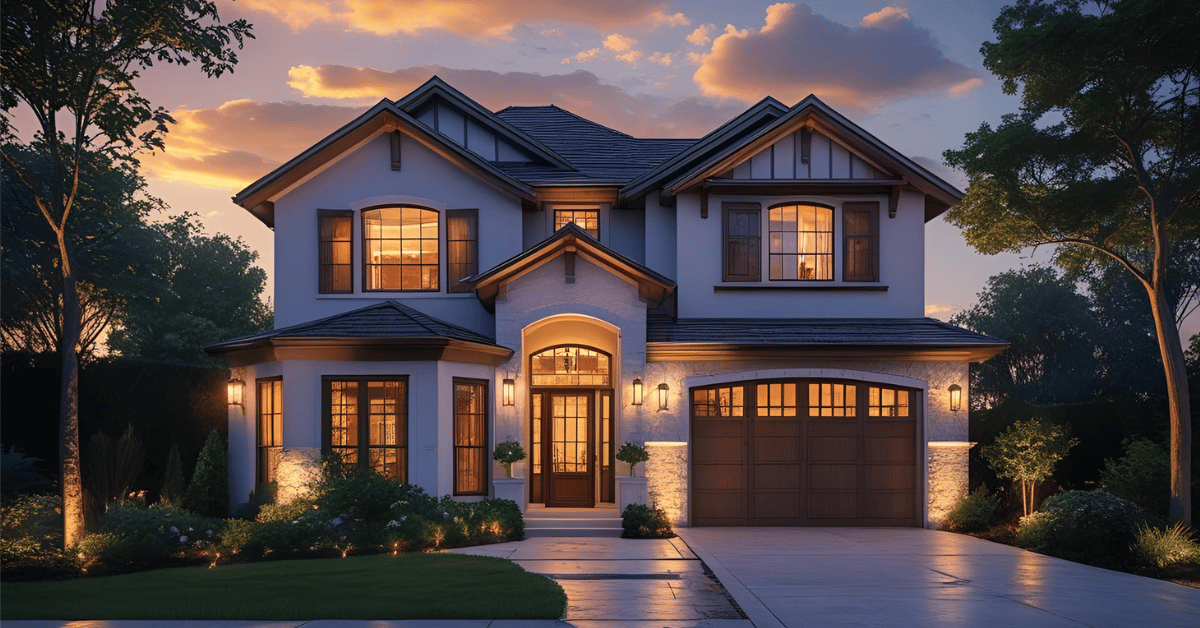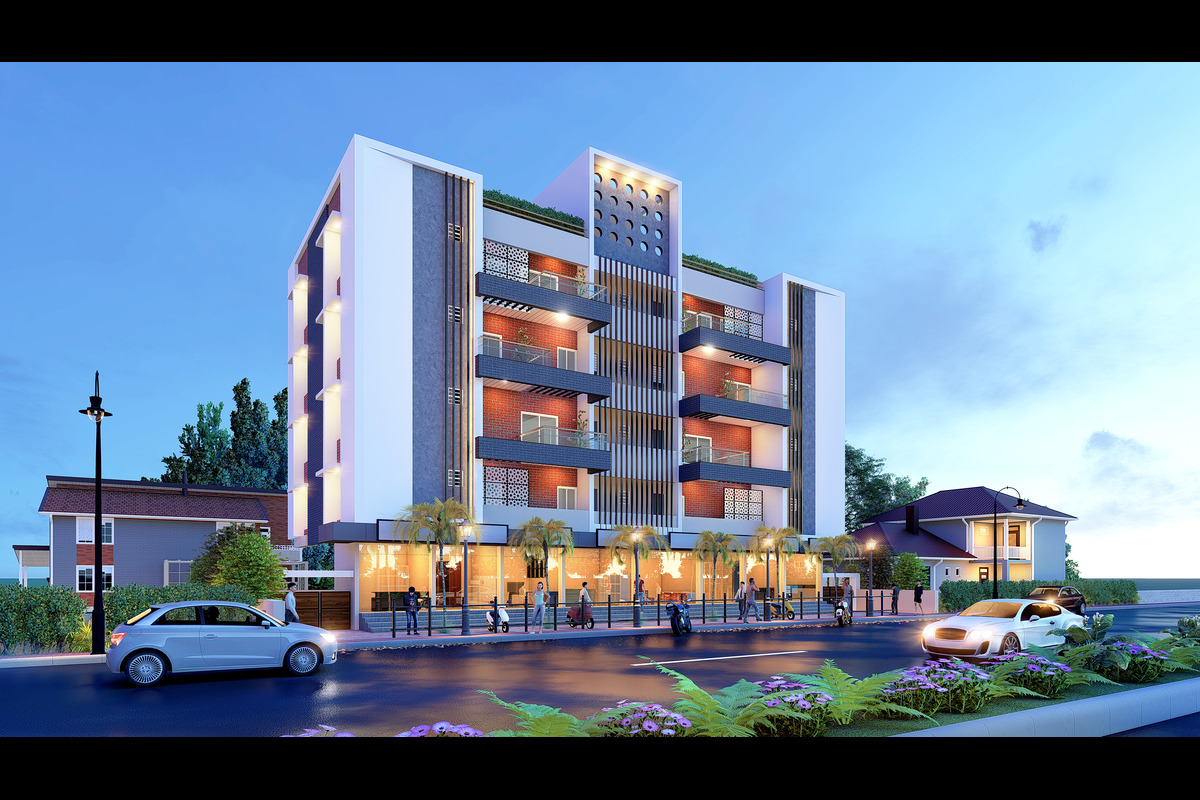How to Create Dusk Shots Without an Evening Shoot Needed

Aerial Photography and Zoning Laws: What Real Estate Agents Need to Know
Success in the hectic world of real estate depends on differentiating oneself from the competitors. For real estate agents, aerial photography—especially with drones—has changed everything as it provides breathtaking bird's-eye views that highlight homes in ways conventional ground-level photography cannot. But along with this great tool comes a complicated web of zoning rules, drone restrictions, and privacy issues agents must negotiate to properly and legally employ aerial photography. This thorough book investigates the junction of zoning rules and aerial photography, therefore arming real estate brokers with the information they need to use this technology while remaining compliant. We will also show how tools like PixelShouters can improve aerial photography initiatives, so guaranteeing excellent output that enthralls possible purchasers.
The Evolution of Aerial Photography in Residential Real Estate
By providing original viewpoints that showcase a property's layout, surrounds, and closeness to amenities, aerial photography has revolutionized real estate marketing. The National Association of Realtors claims that homes with professional photos—including aerial views—sell faster and usually at more than average rates. Particularly drone photography has grown in popularity because of its flexibility and cost relative to more conventional techniques like helicopter flights.
Offering specialized real estate photo editing that improves drone images, services like PixelShouters have profite from this trend. PixelShouters guarantees visually appealing and professional aerial images by changing lighting, removing undesired objects, and enhancing colors, so helping agents create a good first impression. PixelShouters, for instance, can make a drone picture stand out on internet listings by improving the brightness of the sky or eliminating power lines.
Why Aerial Photography is Important
Real estate agents can gain from aerial photography in several important ways:
Drone views expose the whole extent of a property, including its boundaries, landscaping, and surrounding parks or waterfronts.
Improved marketing: Studies showing homes with aerial images are 68% more likely to sell draw more views and inquiries.
Agents that use aerial photography show a dedication to contemporary marketing methods, which appeals to tech-savvy consumers.
Drones are easily available for many kinds of property since they offer high-quality aerial views at a fraction of the cost of conventional techniques.
Aerial photography does, however, offer advantages that also carry obligations. To stay out of legal hot water, agents have to know zoning rules, drone laws, and privacy issues. Let's explore these important spheres.
Real Estate's Zoning Laws: Understanding
Local rules known as zoning laws control land use in particular areas. These rules set guidelines for property development including building height, density, and permitted uses and split municipalities into zones (e.g., residential, commercial, industrial). Zoning rules are absolutely important for real estate agents since they directly affect the value, possible uses, and marketability of a property.
Important Features of Zoning Regulations
Zoning categories:
Residential: Subtypes including single-family, mixed-use, or multi-family; areas set aside for housing.
Commercial: Zones for companies, such offices or retail stores.
Industrial: Sector of heavy industry or manufacture.
Agricultural: Ground set aside for rural activities or farming.
Mixed-Use: Combining several uses—residential and commercial—in one space is known as mixed-use.
Restriction on Development:
Minimum distances a structure must be from streets or property boundaries.
Maximum allowed height for buildings is Height Limit.
Density: Affecting multi-family projects, number of units permitted per acre determines
Use restrictions: Specific activities allowed or forbidden inside a zone.
Res zoning and variances:
Through local planning boards, property owners can ask variances—exceptions to zoning regulations—or rezoning—that changes the zoning classification of a given property. These complicated procedures call for public hearings.
Why Zoning Laws Count for Aerial Photographers?
Aerial photography can highlight possible difficulties or expose zoning-related information improving the attractiveness of a property. A drone view displaying the proximity of a property to a commercial zone, for instance, may draw buyers drawn in by mixed-use prospects but discourage those looking for a quiet neighborhood. On the other hand, aerial pictures of a rural property set aside for farming might highlight its vast area and development possibilities.
Agents marketing properties with aerial photography have to be aware of zoning laws in order to:
Correctly depict the zoning or possible uses of a property to avoid legal conflicts or lost sales.
Aerial views can highlight zoning benefits including a large lot size in a residential zone or proximity to mixed-use area facilities.
Clear communication about zoning restrictions helps to avoid misleading buyers, who might expect unrealistically—that a residential property could be used for commercial use.
PixelShouters can help by editing aerial photos to highlight zoning-related elements, such stressing the boundaries of a property or improving surrounding facilities. They might change colors, for example, to make a nearby park seem more vivid, so enhancing the attractiveness of the property in a residential zone.
Drone Laws and Aerial Viewpoints
While zoning rules control land use, drone rules direct aerial photography practices. Particularly for commercial uses like real estate photography, the Federal Aviation Agency (FAA) controls drone operations in the United States. Agents must know FAA rules since non-compliance could lead to fines, legal action, or grounded drones.
FAA Rules Regarding Commercial Drone Use
Certification in Part 107:
Commercial drone operators have to get a Remote Pilot Certificate under FAA Part 107. This calls both registering drones weighing more than 0.55 pounds and passing an aeronautical knowledge test.
To minimize liability, agents hiring drone photographers should check the operator's insurance and certification.
Operating restrictions:
Drones have to remain inside the operator's visual line of sight and below 400 feet above ground level (the "1-1 rule").
Without specific waivers, flying over people, moving vehicles, or restricted airspace—that is, close to airports—is forbidden.
Night operations call for anti-collision lighting and extra training.
The Remote Identification Rule:
Drones have to broadcast identification data while in flight since September 2023, easily available to law enforcement for responsibility and security.
Local Guidelines:
Certain towns have further drone rules, including no-fly zones across public parks or local license requirements. Agents have to investigate local legislation to guarantee adherence.
Privacy and Ethical Concerns
Particularly when drone views cover nearby homes or private areas, aerial photography raises serious privacy questions. Images depicting identifiable people, private areas (such as backyards), or neighboring properties without permission—perhaps resulting in lawsuits—showing "trespass-by-drone." For instance, citing rural crime concerns, a Mumsnet user complained when a neighbor's real estate listing featured drone images of their garden. Likewise, when drone photography captured their property, a New Zealand Reddit user dubbed it a "invasion of privacy".
To mitigate privacy issues, agents should:
Obtain Consent: Notify neighbors about drone operations and seek permission if their property might show in shots.
Blur Sensitive Areas: Use editing services like PixelShouters to blur neighboring properties or private places in aerial photographs.
Limit Scope: Focus drone shots on the listed property to avoid capturing irrelevant regions.
Share with neighbors and clients the goal and range of drone photography to foster confidence.
PixelShouters excels in addressing privacy concerns by giving precise editing services, such as deleting recognizable details or blurring nearby properties. This assures compliance with privacy regulations while keeping the image’s marketing attractiveness.
How Zoning Laws and Aerial Photography Intersect
Zoning restrictions and aerial photography cross in various practical ways, altering how agents promote homes and communicate with buyers. Here’s how these elements operate together:
1. Showcasing Zoning Features
Aerial photography can clearly express zoning-related data that boost a property’s value. For example:
Residential Zones: Drone pictures might showcase big lot sizes, proximity to schools, or peaceful neighborhoods, appealing to families.
Commercial Zones: Aerial photographs can display access to main roadways or visibility from high-traffic regions, luring commercial purchasers.
Mixed-Use Zones: Drones may capture the blend of residential and business places, emphasizing lifestyle benefits.
PixelShouters can enhance these photographs by altering lighting to accentuate essential aspects, such as a property’s closeness to a commercial hub or its wide backyard in a residential zone.
2. Identifying Zoning Constraints
Aerial photography can disclose zoning limits that agents must handle transparently. For instance:
Setbacks and Boundaries: Drone pictures can indicate how close a property is to its boundaries, showing restricted growth possibility due to setback laws.
Proximity to Restricted Zones: Images capturing nearby industrial or agricultural zones might deter buyers seeking a purely residential area.
Flood Zones: Aerial views can highlight proximity to water bodies, triggering discussions about flood zone restrictions.
Agents should link aerial photographs with zoning disclosures to ensure purchasers understand these limits. PixelShouters can assist by adding comments or overlays to photos, such as designating property boundaries or emphasizing zoning categories, making it easier to express complex information.
3. Supporting Variance or Rezoning Notes
When clients request deviations or rezoning, aerial photography can bolster their argument by giving visual proof. For example, a drone photo illustrating a property’s compatibility with nearby commercial uses can support a rezoning proposal from residential to mixed-use. Similarly, aerial pictures can indicate that a variance for a taller construction won’t affect the neighborhood’s attractiveness.
PixelShouters may enhance these photographs for presentations to planning boards, assuring clarity and professionalism. They can design composite images, for example, comparing suggested and present uses, therefore enabling stakeholders to see the changes.
Best Strategies for Real Estate Agents Employing Aerial Photographs
To maximize the benefits of aerial photography while staying legal with zoning rules and drone regulations, agents should follow these best practices:
1. Work with Licensed Professionals
Hire FAA-certified drone operators with experience in real estate photography. Verify their credentials, insurance, and portfolio to assure high-quality results and legal compliance. PixelShouters can supplement these efforts by providing post-processing services, such as color correction and object removal, to polish raw drone footage.
2. Drone Rules and Research Zoning
Research the zoning classification and local drone rules of the land before planning a drone shot. Look for:
Zoning laws influencing the usage or development possibilities of the land.
No-fly zones, local permit restrictions, or privacy rules.
FAA flight limitations, particularly around military sites or airports.
If confused about rules, speak with local planning departments or attorneys.
3. Strategically Plan the Shoot
Good aerial photography calls for deliberate preparation:
Shoot at the golden hours—sunrise or sunset—for soft, warm illumination that improves picture quality.
Plan drone paths to concentrate on the property and steer clear of capturing private areas.
Make sure the property is set and clean; eliminate clutter and trim the landscaping.
By offering pre-shot checklists and altering raw images to handle lighting or composition problems, PixelShouters can improve planning.
4. Attend to Privacy Issues
Reduce privacy threats with:
Alerting neighbors about drone activity and, if necessary, getting permission.
Blurring or cropping sensitive parts in photos using editing tools.
Watching videos to make sure no private areas or recognizable people are present.
Here especially beneficial are PixelShouters' editing services, which provide exact changes to safeguard privacy while maintaining the beauty of the image.
5. Use Aerial Photography in Marketing
Optimize the effect of aerial photos by:
Online Listings: To draw more views, highlight drone shots heavily in MLS listings, websites, and social media.
Combining aerial images with 3D tours creates a virtual tour for a realistic experience.
Print materials for open houses using high-resolution aerial pictures on fliers or pamphlets.
PixelShouters guarantees photographs look great in both digital and print formats by optimizing them for several platforms.
6. Share with Customers Zoning Techniques
Show sellers and buyers about zoning using aerial photography as a tool:
Buyers: Describe how zoning influences resale value, use, or extension possibilities of the property. Show these ideas graphically via drone views.
Highlight zoning benefits, such a large lot in a desired residential zone, to support pricing.
PixelShouters may provide annotated graphics that highlight zoning specifics, therefore enabling clients to easily access complicated information.
PixelShouters' Role in Aerial Photography
Aerial photography is much improved by the top real estate photo editing company PixelShouters. Their knowledge guarantees that drone pictures not only look great but also follow privacy and marketing guidelines. PixelShouters supports agents in this way:
1. Visual Improvement
PixelShouters provides a spectrum of editing techniques to enhance aerial photos:
Lighting and color correction changes brightness, contrast, and saturation to make images vivid and welcoming.
Eliminates distractions including trash, electrical lines, or nearby buildings.
Sky Replacement: Uses brilliant, blue backgrounds to accentuate drab sky and improve their look.
These tweaks turn unprocessed drone footage into professional-grade photos that enthrall purchasers.
2. Compliance with Privacy
PixelShouters can: help with privacy issues by:
Blur adjacent homes or private areas to avoid "trespass-by-drone" problems.
Use crop pictures to highlight just the specified property, therefore lowering the possibility of legal conflicts.
Eliminate obvious elements from overhead views, such people or cars.
These tools guarantee that agents uphold high-quality images and follow privacy regulations.
3. Modification for Zoning Communication
Aerial photos can be customized by PixelShouters to emphasize zoning-related elements:
Add labels to indicate property limits, setbacks, or adjacent facilities, so clarifying zoning information for purchasers.
Create composite pictures comparing proposed modifications for variance or rezoning applications with current zoning.
Add planned buildings or landscaping to show growth possibilities inside zoning restrictions.
These tweaks enable agents to properly convey complicated zoning data.
4. Quick Turnaround and Cost-Effectiveness
With fast return times, PixelShouters lets agents satisfy strict listing deadlines. Their affordable services also enable expert photo editing for homes of all budgets. This affordability lets agents maximize return on investment since drone photography offers cost-saving advantages.
5. Support for Several Marketing Outlets
PixelShouters enhances photos on several platforms, including:
Online listings: Redfin, Zillow, or MLS high-quality photos.
Social Media: strikingly beautiful images for Facebook, YouTube, or Instagram.
Print materials: crisp photos for fliers or brochures.
This adaptability guarantees that aerial imagery will be seen by a large audience, therefore improving the marketing impact.
Case Studies: Active Aerial Photography
Examining these fictitious case studies will help you to show the value of aerial photography and PixelShouters' contribution:
First Case Study: Suburban House Property
In a competitive suburban market, a real estate agent notes a single-family house designated for use. Although the home has a big backyard and close proximity to a park, ground-level pictures fall short in capturing its overall attractiveness. The agent teams with PixelShouters for editing and employs a certified drone operator to provide aerial views.
The overhead pictures show the huge lot size of the property, which is a major benefit in the residential zone, and its close proximity to the park, so enticing to families.
PixelShouters' contribution is the color enhancement of the sky, removal of power lines, and blur of a neighbor's backyard to handle privacy issues. They also clarify setback rules by adding an overlay indicating the limits of the property.
Result: The listing attracts 50% more online views than similar properties devoid of aerial images, which results in a two-week sale above asking price.
Case Study 2: Site of Commercial Development
An agent promotes an urban unoccupied property set aside for mixed-use development. The lot's close proximity to important roadways and business centers is a selling feature; but, without images, its potential is difficult to communicate. The agent hires PixelShouters for post-processing and shows the place via drone photographs.
Aerial views show the lot's connectivity to high-traffic areas, perfect for retail or office construction, and its fit with other mixed-use zones.
The program generates a composite graphic illustrating a proposed retail complex within zoning height restrictions, therefore enabling buyers to see the possibilities of the location. To minimize privacy problems, they also blur nearby private estates.
Result: The improved photos draw several developer offers, which speeds up a premium price sale.
These examples show how aerial photography combined with PixelShouters' editing skills could improve listings and handle zoning issues.
Aerial Photography and Zoning Future Trends
Aerial photography and zoning rules will always influence real estate marketing as laws and technology develop. These trends are worth observing:
1. Novel Drone Technology
Drones with enhanced cameras, longer flight periods, and AI-driven functions will create higher-quality photographs and movies. AI can, for instance, automatically adjust flight trajectories to get ideal angles or alter images in real-time, hence lowering dependency on post-processing. PixelShouters is probably going to include artificial intelligence technologies to expedite editing and guarantee agents get perfect shots.
2. Virtual Reality and 3D Modeling
Drones can build 3D models of properties, allowing buyers to examine layouts digitally. Combined with virtual reality (VR), these models enable immersive experiences that highlight zoning aspects, such as lot size or closeness to facilities. Adding realistic textures or virtual staging components helps PixelShouters improve 3D renderings.
3. Evolving Zoning Regulations
As cities adjust to population expansion and climate change, zoning laws will become more flexible, permitting mixed-use developments or higher density in metropolitan areas. Showcasing these possibilities will mostly rely on aerial photography; PixelShouters offers tailored images to highlight zoning changes.
4. More Rigid Drone Rules
The FAA and municipal governments might tighten regulations to handle privacy and safety issues as drone use rises. Agents have to keep current on these developments to avoid fines. By altering photographs to satisfy privacy criteria, working with companies like PixelShouters helps guarantee compliance.
Finally
For real estate agents, aerial photography is a great tool since it provides amazing images that improve property listings and draw buyers. Still, its use is controlled by a complicated interaction between privacy issues, zoning rules, and drone policies. By recognizing these aspects and implementing best practices, agents can employ aerial photography successfully while being compliant.
This technique depends heavily on PixelShouters, which offers professional, market-ready visuals from expert photo processing of raw drone photographs. From improving colors to handling privacy issues, their services enable agents to harness the power of aerial photography while negotiating moral and legal problems.
Agents that embrace aerial photography and work with companies like PixelShouters will have a competitive edge as the real estate market changes and provide outstanding value to customers and faster closing of deals. Real estate professionals can fly to new heights in their marketing activities by remaining knowledgeable about zoning laws and drone rules and by using modern technologies.




